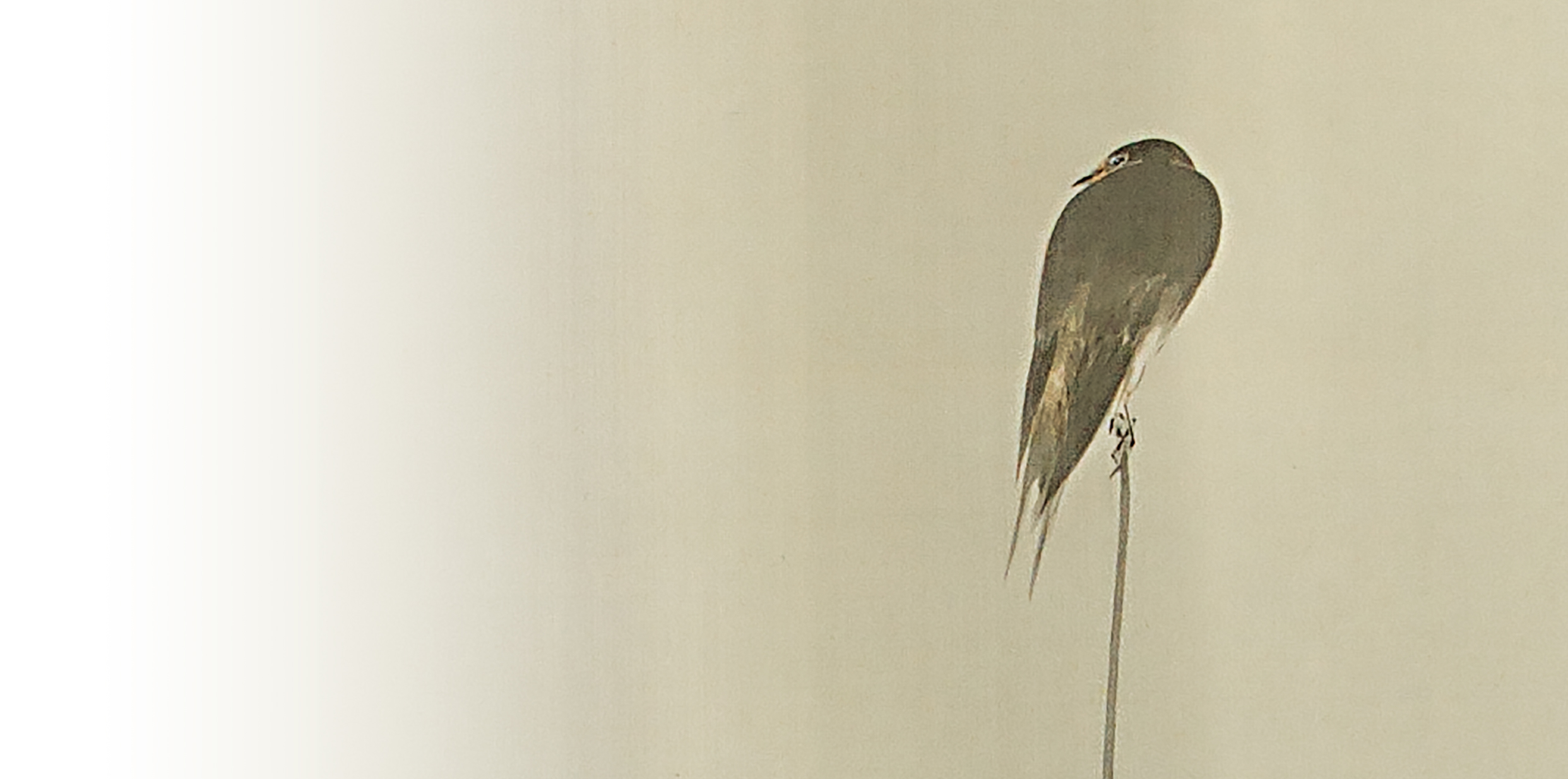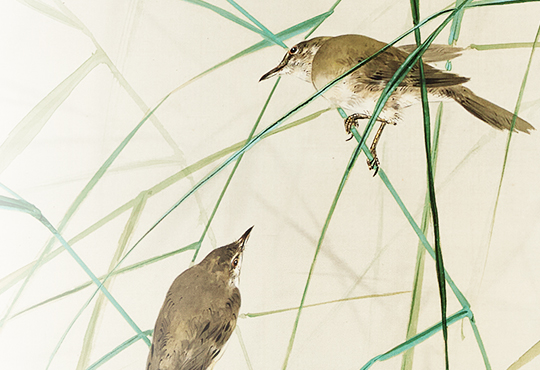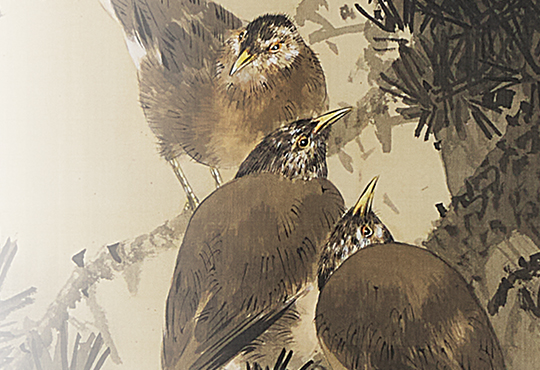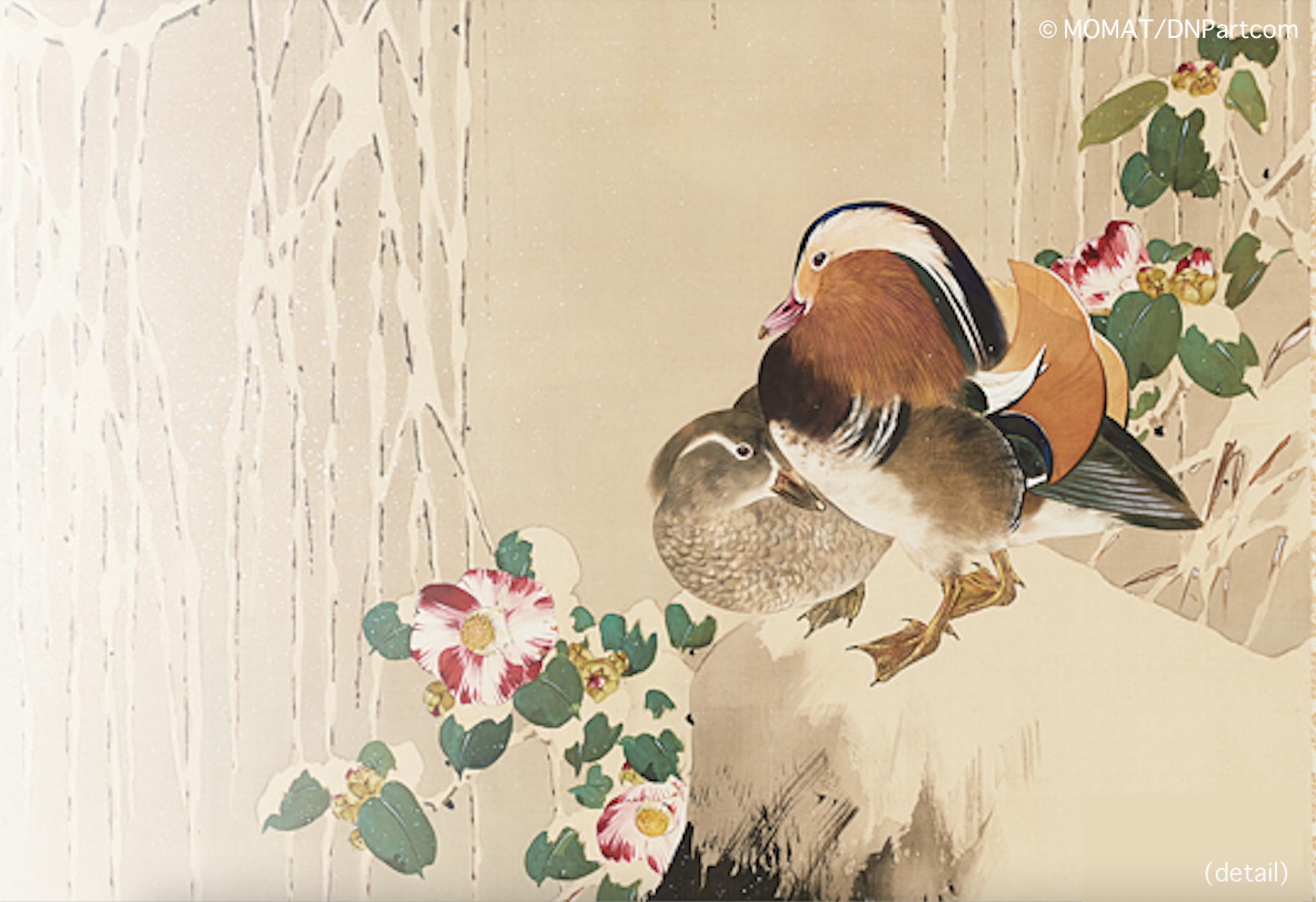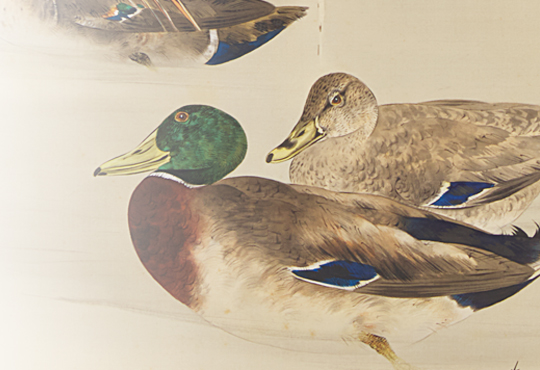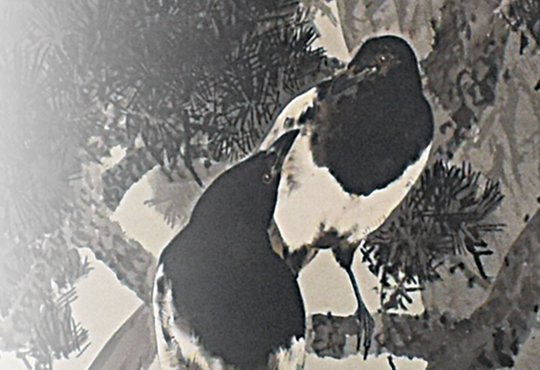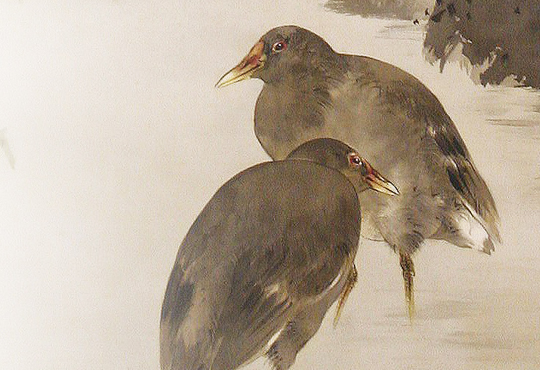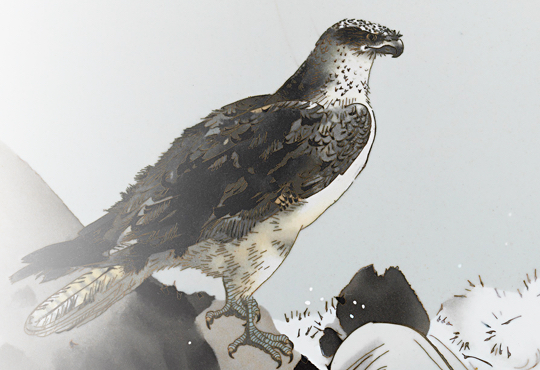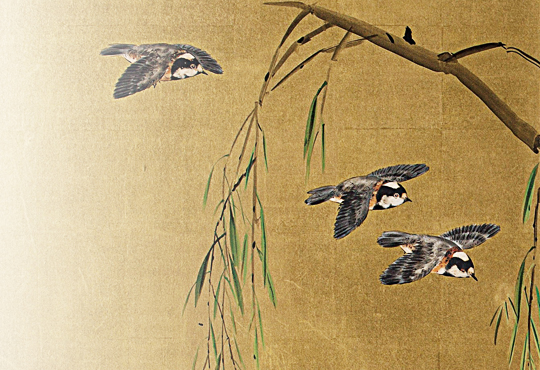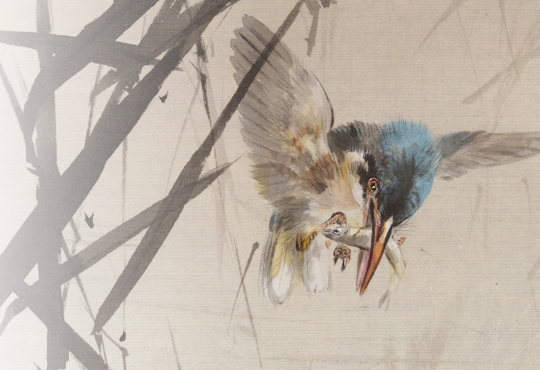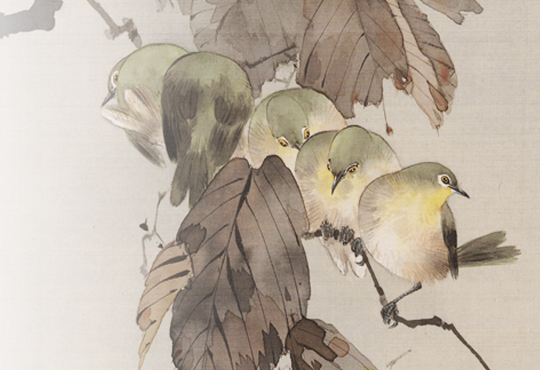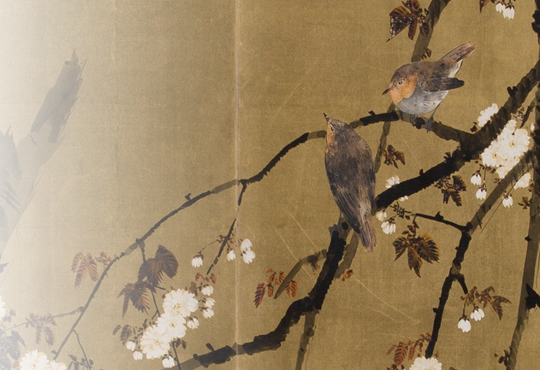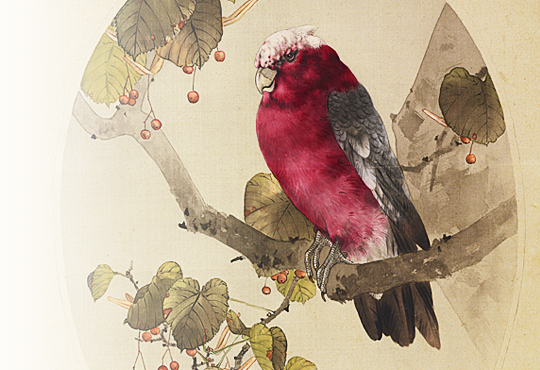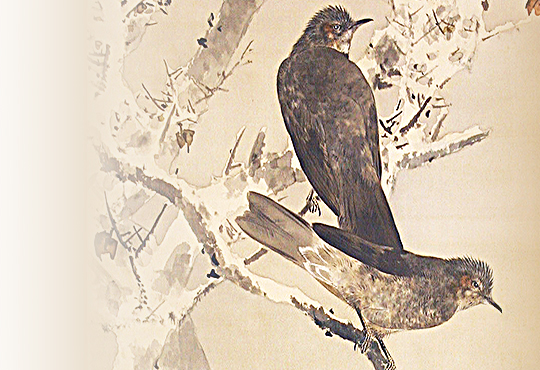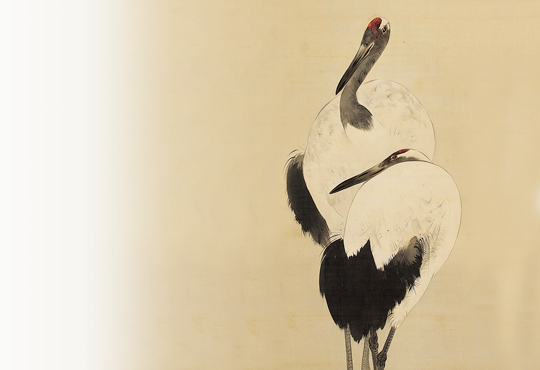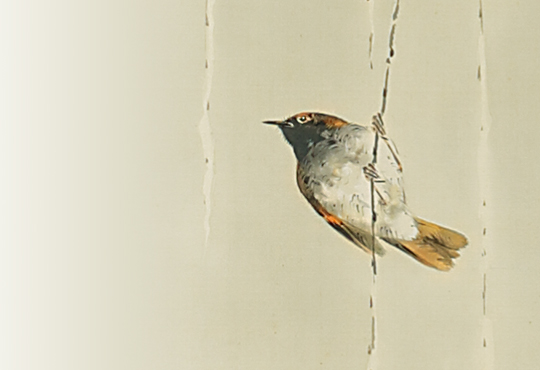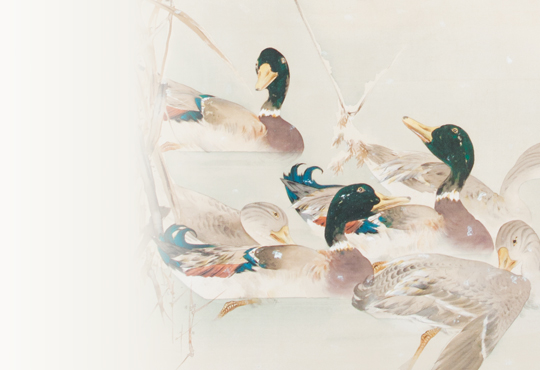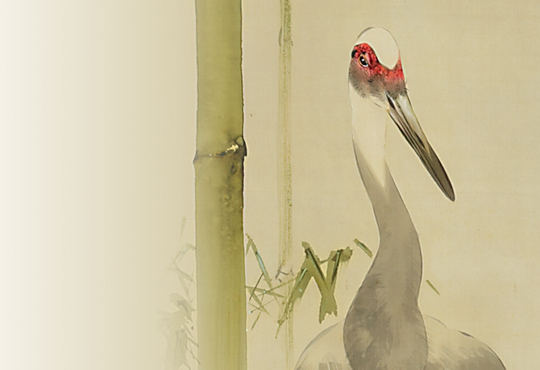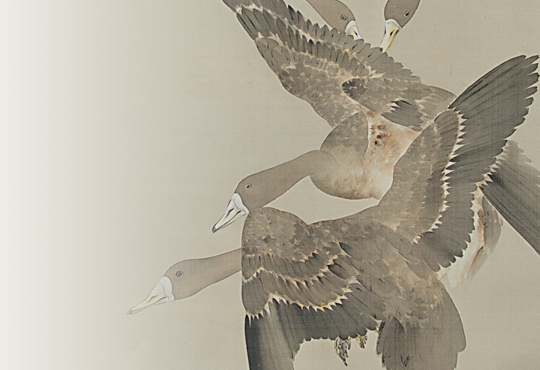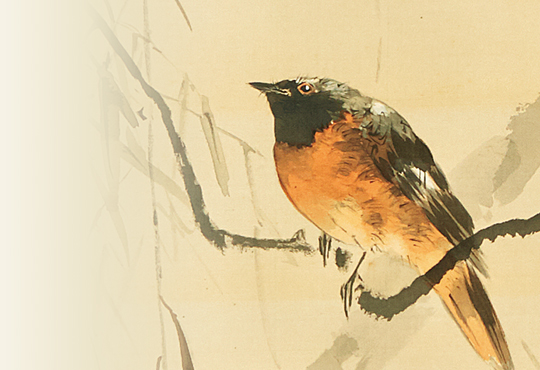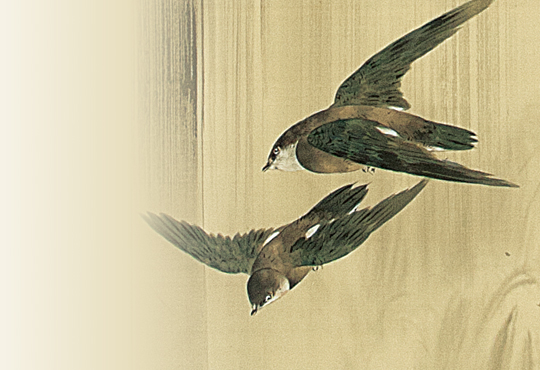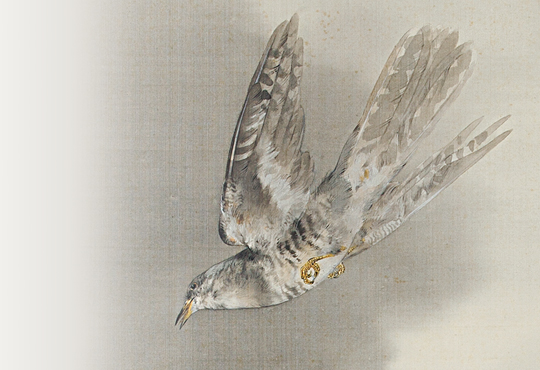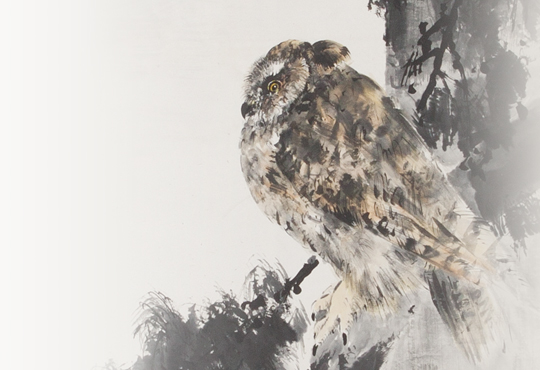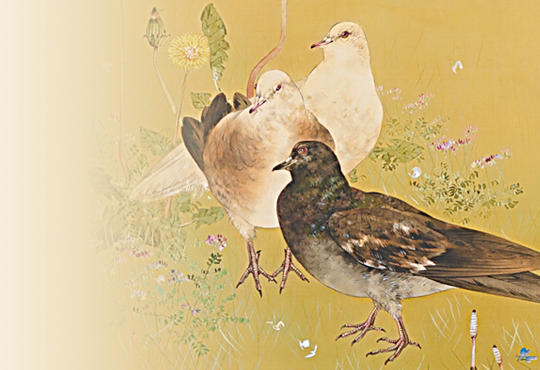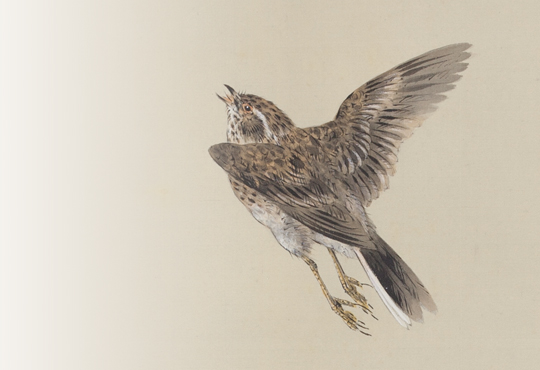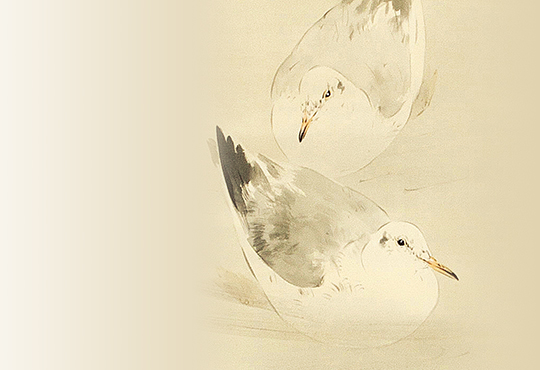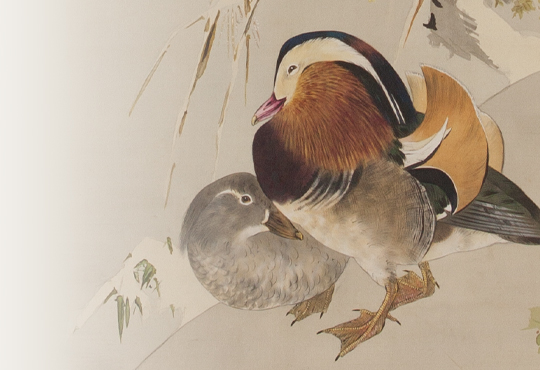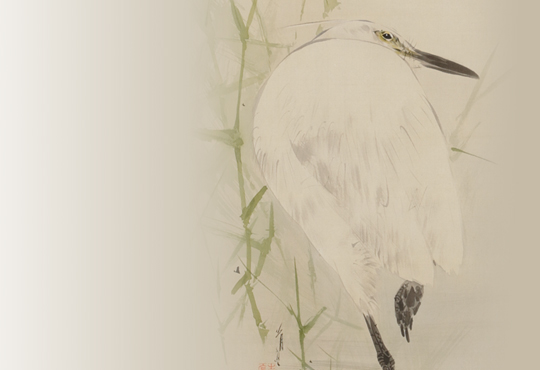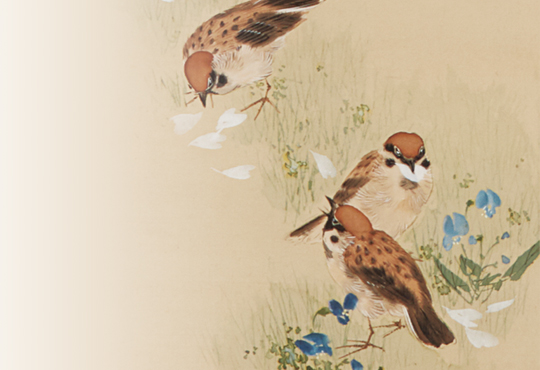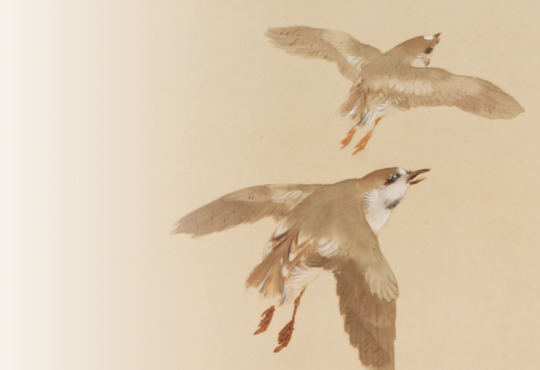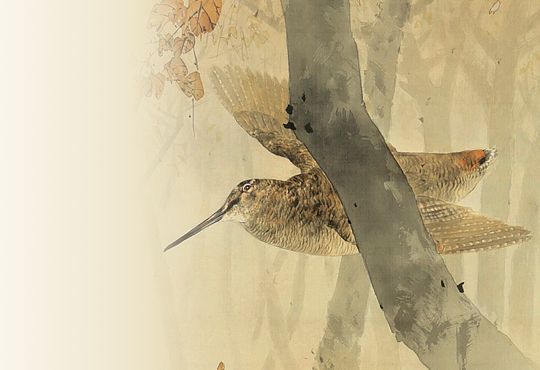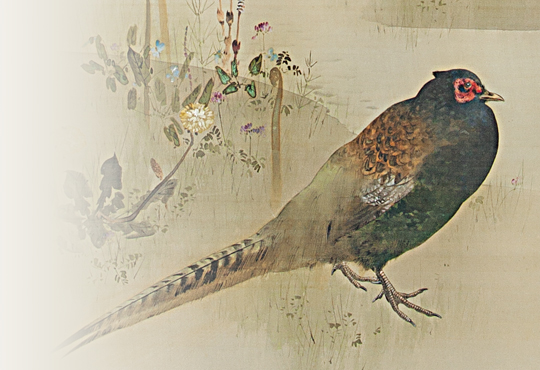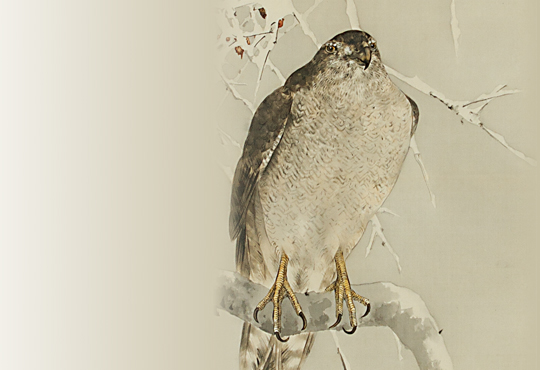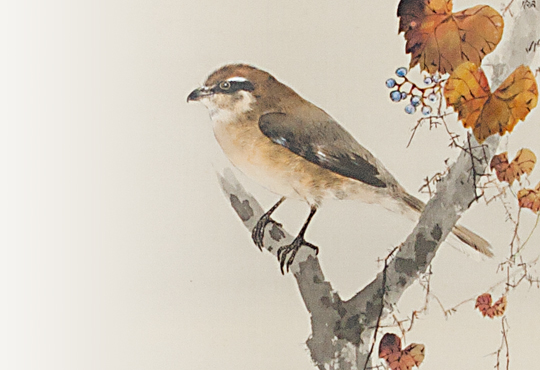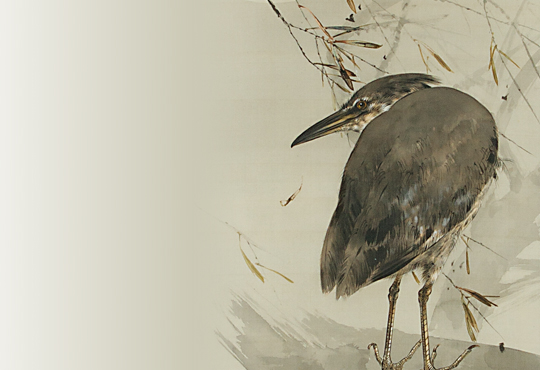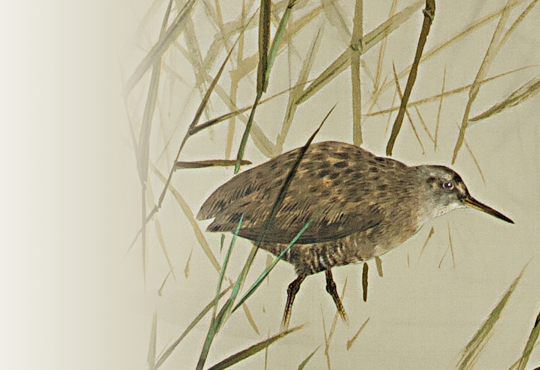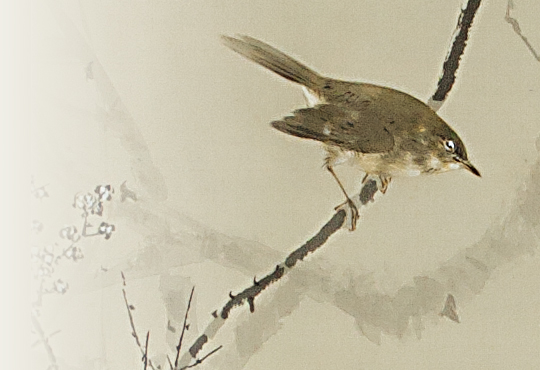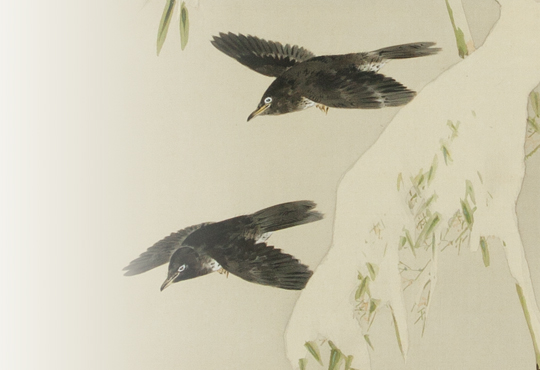Swallow and flowers
A set of twelve scrolls,
color on silk, with a box signed and sealed by the artist
size : 115×40 ㎝ /212×54 ㎝
vol.03 Barn swallow thah does not fly: Swallow and Flowers
A Barn swallow perches on the thin stake. The round body is black, wings and tail are closed. Face is turned to the left, and burgundy color on the forehead and throat can be seen slightly. There are two streaks of light in the background after rain, and the feathers might be wet and heavy, so that swallow seems not to have intention of flying. It is a very serene scenery.
Barn swallow (Hirundo rustica) is widely distributed all around the world. It is one of the most familiar birds to human. Its color is shining black from head to tail, and burgundy on the forehead and throat. The wings are long and sharp, the fork-tail has white spot in the middle and the lateral tail-feather is very long. The length of the lateral tail-feather varies among individuals, but male has longer feather. This swallow here might be female given the short tail. There are 8 subspecies categorized geographically, and each of them has different body size and colors of the belly. The subspecies seen in East Asia (including Japan) or Europe have white belly, but the ones in North America and Siberia have burgundy belly.
Barn swallow is commonly seen in Japan, and many artists have painted them. Seitei is of course one of them, as seen in the works such as “Swallow and Cherry Blossom” (Saita Museum), “June from Twelve Month of Birds and Flowers” (private collection). It is one of the most common birds that Seitei painted. When you look at his works, you may notice that many of them are perching on branches or stakes.
The flight ability is the most attractive characteristics of birds. It is most applicable to the fast flying bird like as swallow. Many artists painted flying swallows, but the depiction of them is inaccurate in many cases. The sharp wings and unique fork-tail tell us that it is swallow but other parts of the body are totally off balance. That makes us doubt that they are able to fly.
I assume that this might be caused by swallow’s extraordinary flight ability. Even today, it is difficult to capture the swallow flying without high spec camera with excellent quality of autofocus and shutter speed. Even a painter with excellent dynamic vision could not capture the flying swallow accurately. The afterimage of fast-flying swallows made them depict it inaccurately. It must have been impossible to catch the figure of flying swallow even for Seitei, and he probably knew its impossibility very well from his experience of observing birds. This might be the reason why he did not paint flying swallow. Seitei painted flying swallow in the “Flowers and Birds of Four Seasons” (The National Museum in Krakow) but it is not as realistic as in others.
Contrary to the image, swallows are often seen perching.
They perch on the stakes or house roof while singing or on the ground while picking up nest materials. In early summer, they incubate eggs and rear their nestlings. The fledglings rest on reeds or grasses and are provided food from their parents. In late summer, they flock and rest on reedbed. This painting shows real life of the swallows
Author : Masao Takahashi Ph.D. (Ornithologist)
Dr. Masao Takahashi was born 1982 in Hachinohe (Aomori prefecture) and graduated from Rikkyo University’s Graduate School of Science. Dr. Takahashi specializes in behavioral ecology and the conservation of birds that inhabit farmlands and wet grasslands. Focusing on the relation between birds and art, he has participated in various museum and gallery talks.
